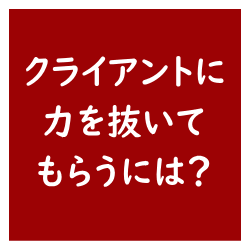目次
健側(非罹患側)に杖を持つと本当に前額面上の
股関節モーメントは軽減できるのか?
最近の研究で,変形性股関節症における理学療法では前額面上における股関節内転モーメントを軽減させることが重要であることが明らかにされてきております.
変形性股関節症例においては股関節内転モーメントの増大は大腿骨頭の外上方偏位を助長することとなるため,理学療法では荷重時の股関節内転モーメントを軽減させる戦略が必要となります.
変形性股関節症例に対して理学療法士が杖の使用を勧めることがありますが,はたして杖の使用は股関節内転モーメントの軽減に寄与するのでしょうか?
今回は健側(非罹患側)に杖を持つと本当に前額面上の股関節モーメントを軽減できるのかを明らかにした研究論文をご紹介させていただきます.

今回ご紹介する論文
Gait Posture. 2019 May;70:311-316. doi: 10.1016/j.gaitpost.2019.03.022. Epub 2019 Mar 25.
Effect of contralateral cane use on hip moment impulse in the frontal plane during the stance phase.
Inai T1, Takabayashi T2, Edama M2, Kubo M2.
今回ご紹介する論文は2019年に公開された新しい論文です.
新潟医療福祉大学のグループの論文ですね.
研究の背景
Recent reports have shown that the daily cumulative moment in the frontal plane (i.e., product of hip moment impulse in the frontal plane during the stance phase and mean steps per day) is a risk factor for hip osteoarthritis. This study aimed to clarify the effect of contralateral cane use on hip moment impulse in the frontal plane of the stance limb.
最近の研究では前額面上における股関節累積負荷(歩行中の股関節内転モーメントの増大と1日当たりの歩数の増加)が変形性股関節症のリスクファクターとして挙げられております.
この研究では健側(非罹患側)に杖を持つと本当に前額面上の股関節モーメントを軽減できるのかを明らかにすることを目的としております.
研究の方法
This study included 15 healthy subjects who walked under four experimental conditions: (1) without a cane and (2-4) contralateral cane use with 10%, 15%, and 20% body weight support (BWS), respectively. To maintain the same walking speed in all conditions, the cadence was set to 80 steps/min, and the step length was fixed. The hip moment impulses in the frontal plane (i.e., area under the hip ab-adduction moment waveform) and peak hip adduction moments in all conditions were calculated.
対象は健常成人15例となっております.
測定の条件ですが,①杖無し歩行,②対側に杖を使用(10%免荷),③対側に杖を使用(15%免荷),④対側に杖を使用(20%免荷)となっております.
全ての条件で同一の歩行速度を維持するため,ケイデンスは80 steps/minとし,歩幅も同一の歩幅としております.
前額面上の股関節モーメント積分値ならびに股関節内転モーメントのピーク値をそれぞれの条件で測定しております.
研究の結果
Contralateral cane use significantly decreased the hip moment impulse in the frontal plane and peak hip adduction moment compared to non-cane use. Moreover, the hip moment impulse in the frontal plane and peak hip adduction moment decreased significantly with increased cane BWS. There were no significant differences in walking speed, cadence, and step length between the four conditions.
対側へ杖を使用することで,杖を使用しない条件に比較して前額面上における股関節モーメントおよび股関節内転モーメントピークが有意に減少しました.
さらに前額面上における股関節モーメントおよび股関節内転モーメントピークは杖への荷重量を増やすことによって有意に減少しております.
なお歩行速度や歩行率,歩幅については4つの条件間で有意差を認めておりません.
研究の結論
Contralateral cane use decreases the hip moment impulse in the frontal plane and peak hip adduction moment in the stance limb. These findings may help clarify how to delay the progression of hip osteoarthritis.
対側への杖の使用は前額面上における股関節モーメントおよび股関節内転モーメントピークを軽減させることが明らかとなりました.
この結果は変形性股関節症の進行を予防する上でも役立つものと考えられます.
今回は健側(非罹患側)に杖を持つと本当に前額面上の股関節モーメントを軽減できるのかを明らかにした研究論文をご紹介させていただきました.
杖の使用は単純な患側への荷重量を軽減させるのはもちろんですが,変形性股関節症を予防する上で重要となる股関節内転モーメントを軽減させる上でも有効であると考えられます.
当たり前のことですが杖の使用という当たり前のことをクライアントにきちんと指導することが重要だと改めて感じさせられる内容ですね.







コメント